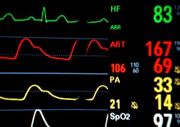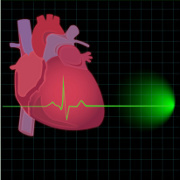
If you’ve ever been shopping and tried on one of those one-size-fits-all garments, then you know from first-hand experience that nothing could be farther from the truth - one-size does not truly “fit” all persons. We all have subtle differences (or maybe not so subtle!) that make the end result of wearing one of these one-size-fits-all garments a different experience for each of us. No two people are going to come out looking quite the same.
One of the complaints about Western medical care is that remedies are approached from a one-size-fits-all perspective. Pharmaceutical companies put out recommended dosage guidelines by age or weight or illness or whatever other criteria that the pharmaceutical powers-that-be deem are appropriate, and doctors dutifully prescribe the drugs at the recommended levels. The problem with this approach is that when it comes to our health, no two of us are exactly alike and one-size-fits-all approach may not produce the best results for all persons. For example, a normal temperature is generally accepted as 98.6 degrees. Most schools send children home at 100 degrees which is a full degree (plus a little) of temperature. But, there are people who run a consistent 97.6 degrees, which is their “normal.” At 99 degrees, they already have a full degree of temperature. By 100 degrees, they may be well on their way to a more serious illness.
Some medical professionals are beginning to wake up to the realization that our bodies are unique and that perhaps, just maybe, it might be prudent to start listening to a patient’s individual needs and adjust medicine dosages accordingly. One such study on hypertension, Telemonitoring and Self-Management in the Control of Hypertension (TASMINH2), examined the question of what happens when patients are allowed (under supervision, of course) to adjust medications according to pre-determined guidelines. (Study results were released in the July 8, 2010 edition of the Lancet.)
Conducted in the United Kingdom (UK), TASMINH2 was a long-term study with 480 participants. Of the total participants, 246 were in a control group which received standard, conventional treatment dosages for hypertension. The remaining 234 participants were allowed to self-manage (under medical supervision) their medication dosages. All participants were between the ages of 35-80 years of age. All had blood pressure levels higher than 140/90 mm Hg. Extremely high risk patients were excluded from the study.
During the first week of each month, participants in the self-management group were required to check their blood pressure every day using an automated blood pressure monitor. The automated blood pressure monitor transmitted the results (though an automated modem) directly to the research team. The results were color-coded, that is green, amber (high but still within safe range) and red (too high). Based on the results, patients would be asked to adjust medication dosages. All patients, regardless of which group they were in, were checked at six months and 12 months.
The results were quite positive for the patients who were allowed to adjust medications throughout the course of the study. According to Dr. Richard McManus, in comparison to those on conventional treatment for hypertension, researchers found that patients who were allowed to adjust medications
• enjoyed lower blood pressure
• had more control over their hypertension
• exhibited sustained results over time
In addition, participants who were allowed to adjust their medications according to their individual health needs enjoyed “absolute reduction” in overall blood pressure levels which equated to a reduction in risk for heart disease (10 percent) and stroke (20 percent). In comparison to those on conventional treatment, the results are significant.
From a purely personal perspective, I like the approach because it listened to patients, took into account their individual needs and also empowered them to participant more fully in their own health care – with excellent results. Despite the good results, not all medical professionals are on board with using this approach citing that factors such as education, literacy, access to adequate health care, and income might prevent some people from using a self-management approach effectively. Also, there were concerns about high-risk patients and the need for monitoring by health care professionals.
Despite the objections, the results speak for themselves. Change is never quick in coming but it may be that we are beginning to approach a new era of patient empowerment and greater collaboration between patient and health care provider when it comes to treatment options.
References
1. McManus RJ, Mant J, Bray EP, et al. Telemonitoring and self-management in the control of hypertension (TASMINH2): A randomised controlled trial. Lancet 2010; DOI:10.1016/S0140-6736(10)60964-6. Available at: http://www.thelancet.com.
2. Ogedegbe G. Self-titration for treatment of uncomplicated hypertension. Lancet 2010; DOI:10.1016/S0140-6736(10)61050-1. Available at: http://www.thelancet.com.
- Show quoted text -






Add a CommentComments
There are no comments yet. Be the first one and get the conversation started!